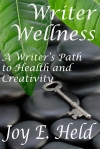“You belong at your library” is an appropriate slogan for this year’s National Library Week celebration. Honestly, go to the library and once you get past the humility of the massive collection of knowledge and ideas all in the same place, look around at everything available to everybody from the casual reader catching up on the daily news to the college professor checking on resources for a class he’s teaching next semester. The point is that EVERYBODY belongs at the library. Everybody, that is, who respects the principle of freedom to access information. Lack of respect for the contents, the people, the equipment, the facilities, or the ideas will get you rightfully tossed out the front door by the gatekeeper known as the Librarian. It’s a tough job monitoring knowledge, keeping it as safe as possible from abuse, staying on top of current information techniques, and exploding technology. But most librarians are fantastic people with a lot on their plates but always willing to help when asked a question. Granted, we’ve all run into the crusty book warden who is a bit ragged around the edges, but the librarian is a jewel and should be treated like the most precious brooch in the collection. After all, she opens the doors everyday and believes in the same thing writers do: knowledge and ideas are only valuable when they are shared.
I have soooo many great librarian stories to share that one week isn’t enough. So here is a brevity list of all the ways libraries and librarians have been a great help to my careers as teacher and writer.
#A librarian near my hometown helped me access a primary source that inspired my first romance novel. If it weren’t for this particular special collections and this wonderful woman who let me read “The Message to Garcia” by Elbert Hubbard (1899), my novel wouldn’t have the historical accuracies it does.
#When my children were young and learning to love reading and writing, a wonderful junior librarian named Brenda made a point to find out what interested them and ordered books year after year that kept them coming back until they moved away for college.
#My favorite aunt is a school librarian.
#Doug at the college library where I teach never fails to amaze me at how quickly and efficiently he responds to my requests for materials no matter where on Earth they’re located.
I’ll save more library/librarian kudos for the rest of the week. What’s your library story?
Happy National Library Week 2012. Hug a library every day.
There are five primary areas of practice to the Writer Wellness plan. Every other week I will post an idea for relaxation (Monday Meditation,) creative play (Tuesday Tickle,) fitness and exercise (Wednesday Workout,) journaling and misc. (Thursday Thought,) and nutrition (Friday Feast.)
 Meanwhile, remember to look for a digital or print copy of Writer Wellness, A Writer’s Path to Health and Creativity at Who Dares Wins Publishing, http://whodareswinspublishing.com.
Meanwhile, remember to look for a digital or print copy of Writer Wellness, A Writer’s Path to Health and Creativity at Who Dares Wins Publishing, http://whodareswinspublishing.com.
Be well, write well.




![Joanna%20A--01-01-2011[1] Joanna Aislinn guest blog](http://writerwellness.files.wordpress.com/2012/01/joanna20a-01-01-20111.jpg?w=150)


